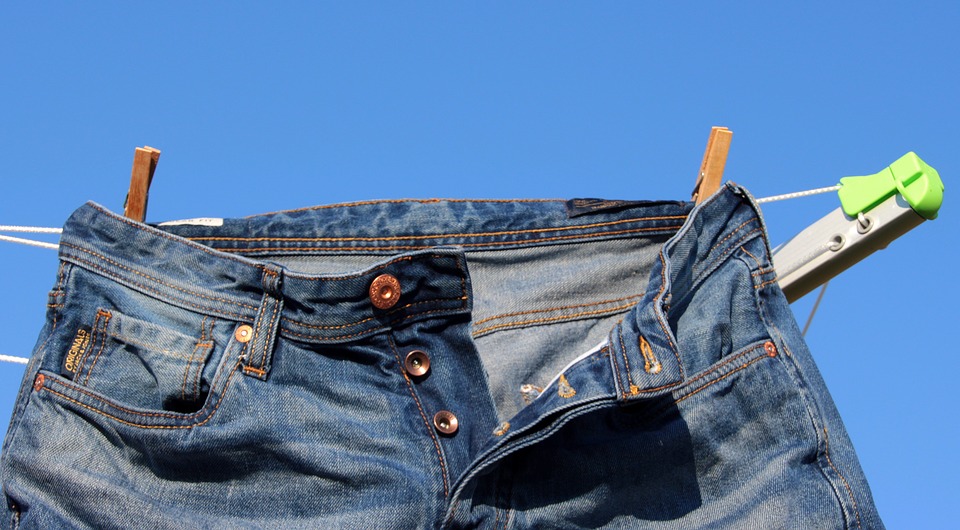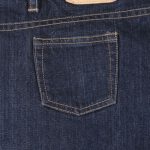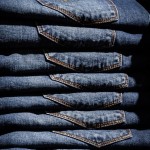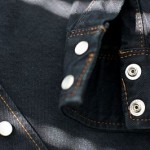With origins dating back to the California Gold Rush, jeans are among the world’s oldest and most popular type of pants worn by both men and women alike. They are comfortable, stylish, durable, and made to last. While other types of pants may possess some of the qualities, they typically far short of achieving the same level of versatility as jeans. Today, we’re going to take a closer look at some of the common practices used in the manufacturing of jeans.
Pre-Shrinking
Have you ever purchased a pair of denim jeans, only to discover that they’ve shrunk after washing them just one time? Like most fabrics and textiles, denim has a tendency to shrink when exposed to hot water. So if you wash your jeans in the washing machine on the hot water setting, there’s a possibility that they’ll fit tighter than before. Depending on just how much they shrink, you may not longer be able to wear them — at least not comfortably. To prevent this phenomenon from happening, Levi Strauss pioneered the use of pre-shrinking as a manufacturing practice in the early 1960s. The 505 regular fit jeans were the same as 501s, but with one major difference: they were shrunk before they were sold, allowing the consumer to buy the correct size without fear of the jeans no longer fitting after they were washed. Even today, pre-shrinking remains a popular and widely used manufacturing tactic among denim companies.
Stonewashing
Another common practice used in the manufacturing of denim jeans is stonewashing. While there are dozens of different ways to “stonewash” jeans, most involve the use of either pumice stones added to a rotating drum, or by using various chemicals to achieve a similar outcome without the rotating drum. Stonewashed jeans experienced a rise of popularity during the 1970s, shortly before the commercial acid wash jeans were introduced into the market (we’ll get to those later). Fast forward to the 2000s and manufacturers revived this process, enhancing the process with heavily distressed techniques to create pre-made holes and frayed edges.
Acidwashing
Not to be confused with stonwashing, acid washing is a manufacturing process that involves washing jeans with special chemicals and compounds to achieve a discolored, distressed appearance. More specifically, chlorine bleach and pumice stones are added during the middle-stage manufacturing process to change the color of the denim. Some of the different designs achieved through acidwashing include ombre, die tye and streaked, each of which has a unique look. Acidwashed jeans may lack the level of popularity that they once had several decades ago, but many men and women actually prefer them for this very reason. If you’re looking for a unique style of jeans that’s sure to turn heads, consider acidwashed for this very reason.
Dyeing
Being that jeans are available in a variety of different colors, ranging from traditional blue and indigo to black, white, red and even yellow, it should come as little-to-no surprise to learn that dyeing is a common manufacturing process. In the past, most denim jeans were dyed blue using a natural indigo dye. More recently, however, manufacturers have transitioned to a synthetic indigo for this purpose. According to Wikipedia, more than 20 thousand tons of synthetic indigo dye are produced each year for the production of jeans. But don’t let these numbers fool you into thinking that it takes a lot of dye to change the color of denim. On the contrary, it generally only takes a few grams of artificial dye to achieve a different color.
Added Fabrics
Think all jeans are made of 100% denim? Think again. Traditionally, denim has been the de-facto standard, some companies have begun to use other fabrics as well. Polyester or Spandex, for instance, is often used in conjunction with regular denim to create stretch jeans. As you may have guessed, stretched jeans have greater elasticity that traditional jeans, allowing the wearer to stretch them with greater ease. Including just 3% of Spandex in jeans can increase its elasticity by as much as 15%, which is pretty impressive to say the least.
Sandblasting
No, that’s not a typo. Some companies actually sandblast their jeans to achieve a truly unique, one-of-a-kind appearance. Sandblasting, as the name suggests, involves the use of high-pressure sand that is literally blasted onto the surface of the jeans. The end result is jeans that have varying levels of color tone and darkness; thus, creating a worn-in look. Sure, you can achieve similar results by wearing your jeans for several years, but an easier and faster solution is to buy jeans that have already been sandblasted.
Patches
A final manufacturing process that’s used to make jeans is patching. These jeans have patches either sewn or otherwise embedded into the surface. Patched jeans are fun and unique, while still offering all of the same benefits of traditional jeans. You can find patched jeans available with all different types of patches, ranging from animals and logos to names, phrases and graphic designs. Of course, if you are really feeling adventurous, you can always purchase a regular pair of jeans and add your own patches. It’s a relatively easy and straightforward process that can greatly enhance the appearance of your jeans with a more customized look.
The Bottom Line…
The next time you go shopping for a pair of new jeans, don’t limit yourself to a single style. As explained in this blog post, jeans are made using numerous manufacturing processes, some of which include pre-shrinking, stonewashing, acidwashing, sandblasting, dyeing and more. Each of these processes gives jeans a unique look, along with other characteristics. Stonewashing, for instance, will make a pair of brand-new jeans look old and worn-in. While some people may turn their heads at the thought of buying jeans that look old, others actually prefer this style. Stonewashed jeans have a unique look that’s perfect for men and women who are hoping to achieve a vintage style — and that’s just one of the many different manufacturing processes used in denim.












